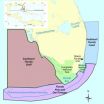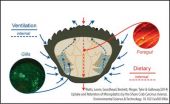(Press-News.org) Although countries with high levels of economic development generally have more personal automobile travel than less-affluent nations, income is not the only factor that determines a nation's demand for cars, according to a new study.
Examining factors that may influence personal automobile use in developing nations, researchers found that government policies such as taxes that keep fuel costs high and the development of road systems can have important influence on levels of automobile travel.
Shaping the personal use of automobiles is an important issue in developing countries. While individual cars can increase access to employment and personal travel, it also can contribute to congestion, air pollution and traffic fatalities, according to the study
Researchers from the RAND Corporation and the Institute for Mobility Research examined four large developing nations and forecast future automobile travel. Researchers concluded that Brazil is likely to have the most automobile travel, followed by Russia, India and China.
"Our research suggests that factors other than income influence automobile travel," said Liisa Ecola, lead author of the study and senior project associate at RAND, a nonprofit research organization. "Some factors reflect underlying trends, but others can be shaped by policy. So just because the Chinese economy has grown rapidly doesn't mean that the Chinese will drive as much as Americans in the future."
Researchers looked for lessons by comparing the developing countries to a set of developed nations that have different personal driving levels -- Japan, Germany, Australia and the United States.
Japan has the lowest levels of automobile travel and the United States has the highest. Germany reflected the European experience and Australia was selected because while it is similar to the United States geographically, it has lower levels of driving.
The study identifies nine factors that influence the amount of personal automobile travel within a nation: car infrastructure, such as the quantity and quality of roads and parking; inexpensive fuel; pro-car policies, such as low vehicle taxes; a lack of alternatives to driving; having a population with a high proportion of working-age residents; the availability of domestic oil; the existence of a domestic car manufacturing industry; the geographic dispersion of a nation's population; and whether a society has a car culture.
For example, despite its many similarities to the United States, Australians drive less than Americans. This is largely caused by higher fuel prices, a smaller domestic car industry and the tendency of young adults in Australia to delay obtaining driver's licenses.
Japan has high personal income per capita, but also a long history of limited road infrastructure and no domestic oil supplies. Current policies in Japan make it very expensive to own a car, with high vehicle taxes and a periodic vehicle inspection that is difficult for older cars to pass.
Ecola and her colleagues drew three broader public policy implications from their research. First, income is not destiny. Most research in the area of long-range forecasting of personal automobile travel has used income as the primary or only variable. While there is a strong correlation between income growth and growth in vehicle travel, income levels alone are not good predictors of travel demand.
Secondly, Ecola said while economic growth can help understand demand for auto travel over time within one country, it is less helpful for understanding differences in demand across several nations.
Finally, among the nine factors that influence mobility, the study suggests that spatial dispersion of the population and car infrastructure are the most important. However, demand also is significantly influenced by transportation policies that keep fuel more expensive than the market price, discourage excessive driving and encourage alternatives to car travel.
The study, "The Future of Driving in Developing Countries," can be found at http://www.rand.org. Other authors include Johanna Zmud of RAND, Charlene Rohr of RAND Europe (the European arm of the RAND Corporation), and Tobias Kuhnimhof and Peter Phelps of the Institute for Mobility Research in Munich, which is known by its German acronym, ifmo.
Research for the study was sponsored by the Institute for Mobility Research and was conducted in the Transportation, Space and Technology Program within the RAND Justice, Infrastructure and Environment division.
The mission of the division is to improve the development, operation, use and protection of society's essential physical assets and natural resources and to enhance the related social assets of safety and security of individuals in transit and in their workplaces and communities.
INFORMATION:
The RAND Corporation is a nonprofit institution that helps improve policy and decisionmaking through research and analysis. To sign up for RAND e-mail alerts: http://www.rand.org/newsletters.html
RAND is a registered trademark
Economic development not the only influence on personal car use, study finds
2014-07-18
ELSE PRESS RELEASES FROM THIS DATE:
UM-led research team contributes to the management of South Florida coastal environments
2014-07-18
MIAMI – A Florida-based marine research team has developed a unique formal process and modeling framework to help manage South Florida's economically important coastal marine environments. The MARES project (Marine and Estuarine Goal Setting), led by the National Oceanic and Atmospheric Administration's (NOAA) Cooperative Institute for Marine and Atmospheric Studies (CIMAS) based at the University of Miami (UM) Rosenstiel School of Marine and Atmospheric Science, successfully integrated both ecosystem science and societal benefits into a marine ecosystem support tool to ...
Scientists find new clues to brain's wiring
2014-07-18
New research provides an intriguing glimpse into the processes that establish connections between nerve cells in the brain. These connections, or synapses, allow nerve cells to transmit and process information involved in thinking and moving the body.
Reporting online in Neuron, researchers at Washington University School of Medicine in St. Louis have identified a group of proteins that program a common type of brain nerve cell to connect with another type of nerve cell in the brain.
The finding is an important step forward in efforts to learn how the developing brain ...
Measuring the number of protein molecules inside cells
2014-07-18
This news release is available in Portuguese. This news release is available in Portuguese.
The identification of the genes and proteins involved in a biological process, as well as the way they interact, are essential for the understanding of that process. However, often little is known about the dimensions of molecular biological structures. Knowing how many molecules make up a structure and are required for its function are essential for our understanding of biological mechanisms. Yet, quantifying molecules of infinitesimal size poses a difficult challenge. ...
Revealed: The mystery behind starling flocks
2014-07-18
The mystery behind the movements of flocking starlings could be explained by the areas of light and dark created as they fly, new research suggests.
The research, conducted by the University of Warwick and published in the journal PNAS, found that flocking starlings aim to maintain an optimum density at which they can gather data on their surroundings. This occurs when they can see light through the flock at many angles, a state known as marginal opacity. The subsequent pattern of light and dark, formed as the birds attempt to achieve the necessary density, is what provides ...
Adults with eosinophilic esophagitis should consider a diet change
2014-07-18
Bethesda, MD (July 18, 2014) — Dietary elimination is a successful method of treatment for adults with eosinophilic esophagitis (EoE), according to a new study1 in Clinical Gastroenterology and Hepatology, the official clinical practice journal of the American Gastroenterological Association.
"By eliminating specific foods from patients' diets, symptoms improved in 71 percent of patients, and endoscopic appearance improved in 54 percent," said lead study author, W. Asher Wolf, MD, MPH, and co-author Evan S. Dellon, MD, MPH, from the division of gastroenterology and hepatology, ...
Genetic variations may modify cardiovascular benefit of aspirin
2014-07-18
BOSTON – Aspirin is the gold standard for antiplatelet therapy and a daily low-dose aspirin is widely prescribed for the prevention of cardiovascular disease.
Now, a new study suggests that common genetic variation in the gene for catechol-O-methyltransferase (COMT) may modify the cardiovascular benefit of aspirin, and in some people, may confer slight harm. The findings, led by investigators at Beth Israel Deaconess Medical Center (BIDMC) and Brigham and Women's Hospital (BWH) appear online in the American Heart Association journal Arteriosclerosis, Thrombosis, and ...
Microplastics worse for crabs and other marine life than previously thought, study shows
2014-07-18
The tiny plastic particles polluting our seas are not only orally ingested by marine creatures, but also enter their systems through their gills, according to a new study led by the University of Exeter.
Scientists also discovered that when microplastics are drawn in through this method they take over six times longer to leave the body compared with standard digestion.
Lead author Dr Andrew Watts of the University of Exeter said: "Many studies on microplastics only consider ingestion as a route of uptake into animals. The results we have just published stress other ...
The bend in the Appalachian mountain chain is finally explained
2014-07-18
The 1500 mile Appalachian mountain chain runs along a nearly straight line from Alabama to Newfoundland—except for a curious bend in Pennsylvania and New York State. Researchers from the College of New Jersey and the University of Rochester now know what caused that bend—a dense, underground block of rigid, volcanic rock forced the chain to shift eastward as it was forming millions of years ago.
According to Cindy Ebinger, a professor of earth and environmental sciences at the University of Rochester, scientists had previously known about the volcanic rock structure under ...
Immune cell's role in intestinal movement may lead to better understanding of IBS
2014-07-18
Learning the role of immune-system cells in healthy digestive tracts and how they interact with neighboring nerve cells may lead to new treatments for irritable bowel syndrome (IBS). Researchers from Penn State College of Medicine, in collaboration with other scientists, have reported the role of macrophages in regulating the contractions of the colon to push digested material through the digestive tract.
The muscular lining of the intestine contains a distinct kind of macrophage, an immune system cell that helps fight infections. The role of these cells in normal colon ...
It's go time for LUX-Zeplin dark matter experiment
2014-07-18
New Haven, Conn. -- From the physics labs at Yale University to the bottom of a played-out gold mine in South Dakota, a new generation of dark matter experiments is ready to commence.
The U.S. Department of Energy's Office of Science and the National Science Foundation recently gave the go-ahead to LUX-Zeplin (LZ), a key experiment in the hunt for dark matter, the invisible substance that may make up much of the universe. Daniel McKinsey, a professor of physics, leads a contingent of Yale scientists working on the project.
"We emerged from a very intense competition," ...




